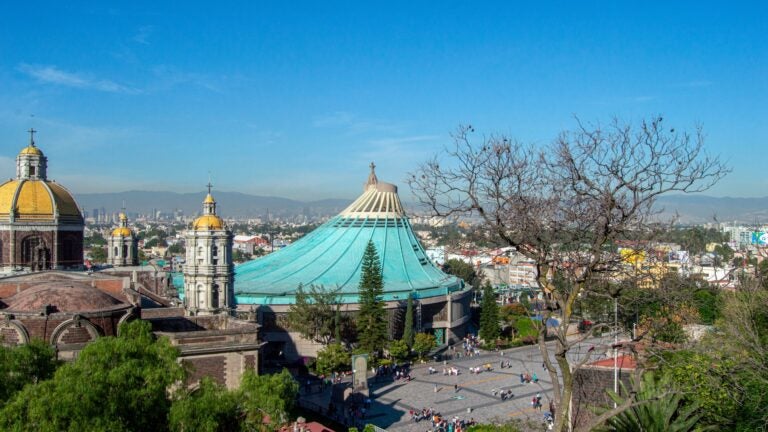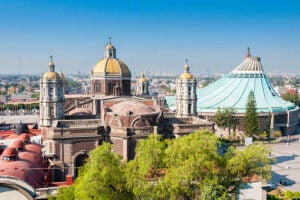
Guadalupe: A Source of Personal and Social Transformation

I first met Our Lady of Guadalupe during a course I took in 1982 at the Mexican American Cultural Center in San Antonio, Texas. A class presentation of Sr. Rosa María Icaza, Ph.D, CCVI, awakened me to the significance of the Guadalupe image and story. Inspired by her lecture, I visited the Basilica of Our Lady of Guadalupe in Mexico City later that year and was overwhelmed with the intense veneration Guadalupe incites among her devotees. I have participated annually in the December 12 Guadalupe feast ever since, and studied and written on the Guadalupe tradition. It never ceases to fascinate me.
Scholars, creative writers and artists have examined Guadalupe from a range of disciplines and perspectives, unveiling her significance as an historical, cultural, gender, social and religious phenomenon. Guadalupe — At the Break of Dawn, a collaborative project between Loyola Marymount University and the Institute for Advanced Catholic Studies at USC, is a welcome addition to the burgeoning field of Guadalupan studies. A series of webinars held in May launched the project, bringing together interdisciplinary experts whose exchanges underscore its promise. The project is poised to shed new light on what could be deemed the postmodern challenge to understanding Guadalupe: when the meanings and applications of traditions like Guadalupe expand, their power to unite people around a common vision can diminish.
Guadalupe — At the Break of Dawn is a welcome addition to the burgeoning field of Guadalupan studies.”
Indeed, while varied perspectives on Guadalupe marked previous eras, today divergent emphases and even outright disagreements about Guadalupe are even more extensive. Like scholars, devotees of Guadalupe link her to an ever broader range of concerns. Native American groups engage her as a source of Indigenous spirituality. Supporters of the prolife movement revere her as the patroness of the unborn. Chicana feminists contend that her purpose is to liberate women and all the oppressed. Church leaders proclaim her as a force for evangelization. As competing parties vie for a hermeneutical edge in delineating and channeling Guadalupe’s potency, their divergent and, at times, conflicting emphases underscore just how influential a phenomenon Guadalupe has become.
As competing parties vie for a hermeneutical edge in delineating and channeling Guadalupe’s potency, their divergent and, at times, conflicting emphases underscore just how influential a phenomenon Guadalupe has become.”
Yet across many divergent groups, Guadalupe and her chosen emissary Juan Diego reveal a common desire to renew peoples’ lives, communities and societies. She is a source of personal and social transformation. As Pope Francis reminded his hearers in his 2016 homily at the Guadalupe shrine in Mexico City, Guadalupe appeared in a dark moment of history. She went to the periphery and through Juan Diego she unleashed the power of hope within an oppressive colonial reality. She asked that a temple be built on the hill of Tepeyac where she “will show and give to all people all my love, my compassion, my help, and my protection.” Not just the natives. Not just the conquering Spaniards. Not just the enslaved Africans, nor the mixed raced children. All people. Pope Francis echoes many other devotees in his insistence that Guadalupe calls us to action as she did Juan Diego.
My hope for Guadalupe — At the Break of Dawn is that it will help us to more fully understand and amplify that call.
Editor’s Note: Timothy Matovina, Ph.D., is a professor and department chair at the University of Notre Dame working in the area of faith and culture, with specialization in U.S. Catholic and U.S. Latina/o theology and religion. Dr. Matovina has written and edited 20 books, most recently “Theologies of Guadalupe: From the Era of Conquest to Pope Francis.”
View his Guadalupe — At the Break of Dawn panel discussion at: https://dornsife.usc.edu/iacs/guadalupe-webinar-one/